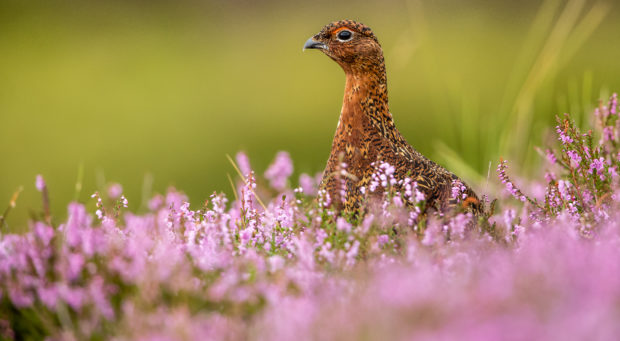Highland grouse moors could help play a part in saving the endangered curlew.
International scientist Dr Daniel Hoffman – speaking as World Curlew Day passed yesterday – claimed the survival of the species in Scotland could lie in the hands of gamekeepers managing key moorland habitats.
Dr Hoffman, a certified biogeographer with Game Conservancy Deutschland, has studied globally-threatened wading birds in Germany and Scotland for four years, measuring breeding success.
After assessing 2018 results, he believes management undertaken by gamekeepers for red grouse is helping sustain core curlew populations.
Across moors in Loch Ness-side, Tomatin, Speyside, Grampian, Tayside, Angus and the Southern Uplands, gamekeepers and their families have been jotting down curlew presence.
Four estates in Tomatin counted 77, while eight on Grampian spotted 195.
The UK supports about a quarter of the world’s entire curlew population yet, while numbers in Scotland are comparatively good, they have still declined 60% since 1994.
Last year, cameras set by Dr Hoffman and his research team at Glenogil Estate in Angus picked up 20 curlew nests successfully breeding chicks from a possible 22.
Lapwings, golden plover and oystercatcher also fared well from records of 148 nests, with around 100 nests being monitored with cameras.
He said: “I am sure gamekeeping plays a major role in the conservation of the Curlew, not in Scotland but in the whole of Britain.
“This is because in non-keepered areas you don’t have this level of successful breeding.
“From studies that we can compare with our German data from last year, 2018 at Glenogil was one of the best breeding situations I have ever seen or read about.
“For example, we found 22 curlew nests, with 20 being successful.
“If you lose the gamekeepers in Scotland, you will lose lots of curlews. I am sure of this, perhaps up to 80% in the next few years. The breeding success depends on the management you do on the landscape.”
Previous science has shown that legal predator management of crows, stoats and weasels by trained gamekeepers using approved traps benefits more than just grouse for shooting parties.
Limiting the numbers of predators which can eat the chicks and eggs of waders leads to better breeding success, especially when combined with strip burning of heather.
Lianne MacLennan, spokewoman for Scotland’s regional moorland groups, said: “The last thing gamekeepers in the groups want is for further declines in these special birds and it has been great to welcome them back. Everyone is keen to support World Curlew Day.”










